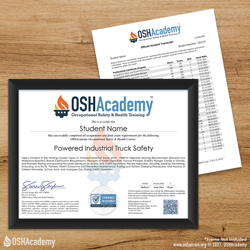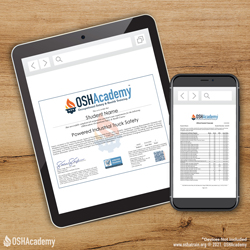Introduction
This course helps to partially fulfill OSHA's instructional training requirements for forklift certification as follows:
- General Industry: OSHA 29 CFR 1910.178
- Construction: OSHA 29 CFR 1926.602(d) and 1926.451(g)(2)
- Oil and Gas: OSHA 29 CFR 1910.178
- Maritime: OSHA 29 CFR 1917.43 and OSHA 29 CFR 1918.65
- Agriculture: OSHA 29 CFR 1928.57(a)(6)
The employer is ultimately responsible for certifying that operators are qualified to operate forklifts. To be fully certified, students must be at least 18 years of age and demonstrate to a competent person designated by the employer that they have adequate knowledge, skills, and abilities (KSAs) to operate a specific forklift.
Course Objectives
| ID | Objective |
|---|---|
| TO 1.0 | Achieve a minimum score of 70% on the final course assessment. |
| LO 1.1.1 | Identify the classes, power sources, attachments, designations, and selection considerations for forklifts/powered industrial trucks (PITs). |
| LO 1.2.1 | Define and give examples of forklift safety measures including, lifting, stability, capacity, traveling and moving on uneven surfaces. |
| LO 1.3.1 | Describe requirements for forklift operations including, inspections, traveling, loading and unloading, traffic patterns, housekeeping, and carbon monoxide. |
| LO 1.4.1 | Describe requirements for forklift maintenance, gas/LPG fueling, and electric forklift battery safe work practices. |
Key: Terminal Objective (TO), Learning Objective (LO)



